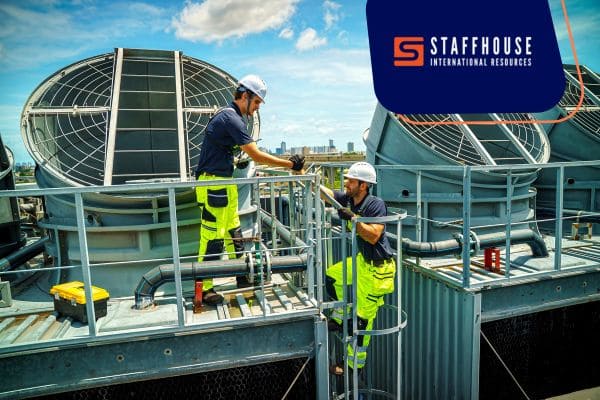
Recruitment involves many moving parts, from finding qualified candidates to completing onboarding, and without an effective system, delays and errors are inevitable. For a manpower agency in the Philippines, managing this complex process manually often leads to inefficiencies that slow down hiring and impact both employers and job seekers.
How can a workflow management system streamline the recruitment funnel for manpower agencies in the Philippines? By automating and tracking each step, these systems speed up processes, reduce errors, and ensure compliance, enabling agencies to deliver faster, more reliable results while improving the experience for all parties involved.
A workflow management system in recruitment is a digital platform designed to automate, coordinate, and monitor every step involved in hiring candidates. It replaces traditional manual methods by providing a centralized hub where tasks such as job posting, applicant tracking, screening, interview scheduling, and documentation can be efficiently managed. This system streamlines communication among recruiters, employers, and candidates, ensuring that every stage of the process is completed promptly and accurately.
Unlike manual recruitment processes that are prone to delays, errors, and miscommunication, a workflow management system uses automation and real-time tracking to optimize productivity and transparency. It enforces standardized workflows while providing valuable data insights, enabling manpower agencies to identify bottlenecks and continuously improve operations. This leads to faster hiring cycles, better compliance with labor regulations, and an overall smoother recruitment experience for both employers and job seekers.
The recruitment funnel covers all stages, beginning from finding candidates to their successful onboarding with an employer. This comprehensive approach guarantees that no critical step is overlooked, ensuring a smooth transition from application to deployment.
Here are the key stages involved in the end-to-end recruitment process:
This stage involves promoting job openings across various platforms to attract a wide and qualified pool of candidates. Manpower agencies may use job boards, social media, and professional networks to reach potential applicants. Effective sourcing helps ensure that the agency has access to diverse talent suited for different roles. Timely and targeted job advertising accelerates the recruitment process by increasing applicant volume and quality.
Once applications are received, candidates undergo evaluation to determine if they meet the job’s requirements. Screening typically involves reviewing resumes, verifying qualifications, and assessing experience to identify promising candidates. Shortlisting narrows down applicants to a manageable group for interviews and further assessment. This step reduces recruiter workload while maintaining focus on high-potential candidates.
During this phase, shortlisted candidates participate in interviews and skill assessments that evaluate their suitability for the role. Interviews can be conducted in various formats, including face-to-face, video calls, or phone conversations. Assessments may test technical skills, problem-solving abilities, and cultural fit. Comprehensive evaluation improves hiring accuracy and reduces early turnover.
With a selected candidate, the agency prepares and presents a job offer along with a legally compliant employment contract. This stage ensures contract terms align with labor laws in both the Philippines and the destination country. Clear and fair agreements protect the rights of both employers and workers. Proper documentation and compliance prevent potential disputes later in the employment relationship.
Deployment marks the worker’s official transition to the employer, accompanied by orientation and training to integrate them successfully. Onboarding activities familiarize workers with their roles, workplace policies, and safety protocols. Effective onboarding increases productivity and worker satisfaction while reducing adjustment issues. The agency monitors this phase to ensure a smooth start and address any concerns promptly.
A workflow system standardizes recruitment steps, reduces delays, and guarantees compliance throughout the funnel. Automating routine tasks and providing analytics enables manpower agencies to proactively manage bottlenecks and improve candidate experience.
Here are the specific benefits at each recruitment stage:
Workflow management systems create faster, more transparent, and legally compliant recruitment processes, benefiting both employers and job seekers alike. These systems offer consistent communication, speed, and accuracy that modern recruitment demands.
As a leading manpower agency in the Philippines, Staffhouse International Resources delivers ethical, efficient, and fully compliant recruitment solutions through advanced workflow management systems. Every stage of the process—from sourcing highly skilled Filipino workers to their seamless overseas onboarding—is carefully managed and monitored for quality assurance.
Staffhouse’s 100% non-fee charging policy underscores its commitment to ethical recruitment, ensuring opportunities remain fair and accessible for workers. By integrating technology-driven processes, our team accelerates placements while maintaining strict compliance standards. Trusted by top global employers, we consistently prove how digital recruitment tools enhance outcomes for both businesses and overseas professionals. Contact us today to find out more.
Facebook: https://www.facebook.com/staffhouseintl
Instagram: https://instagram.com/staffhouseintl
TikTok: https://www.tiktok.com/@staffhouseintl
YouTube: https://www.youtube.com/@Staffhouseintl
LinkedIn: https://www.linkedin.com/company/staffhouse-international-resources